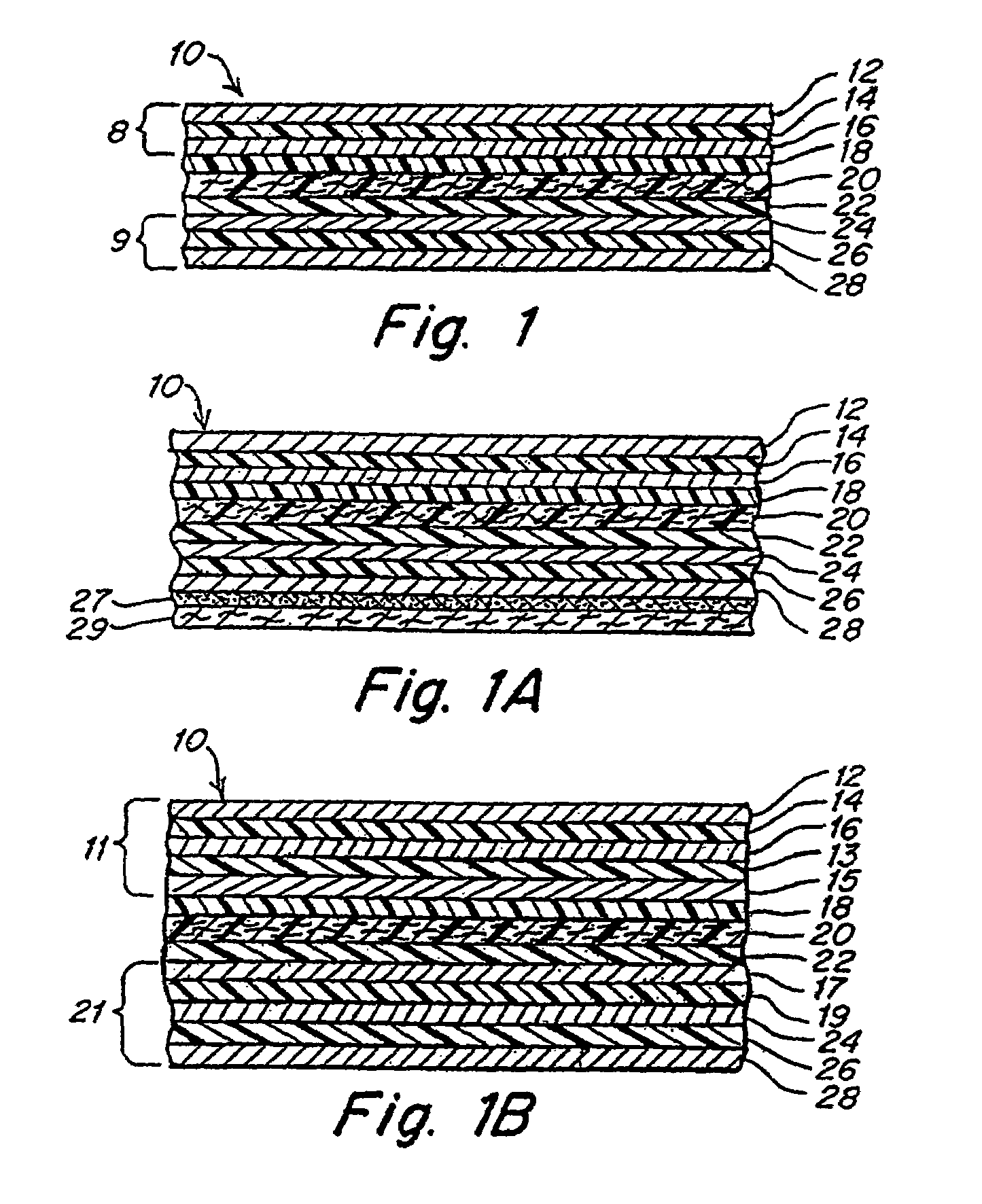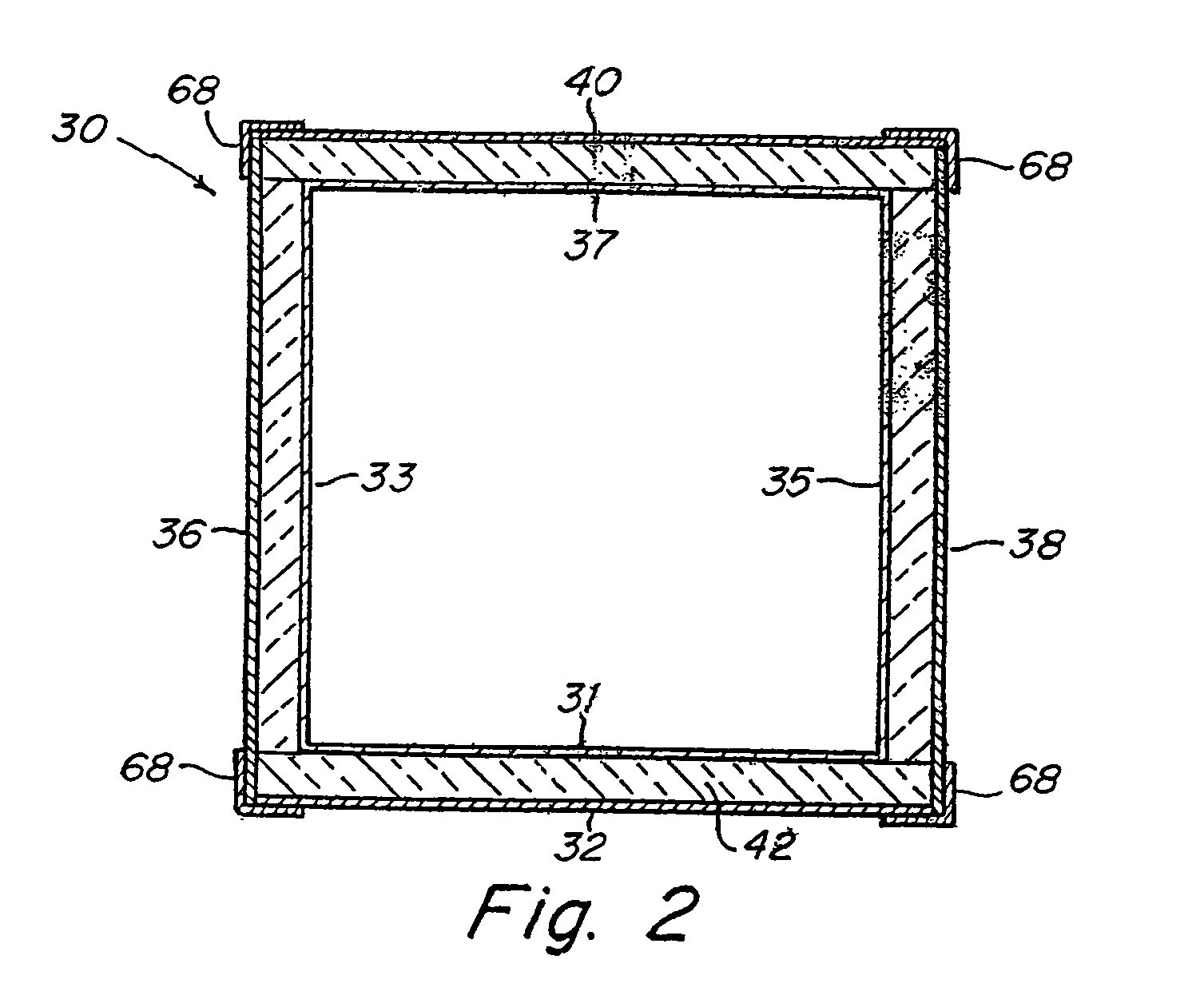Facing having increased stiffness for insulation and other applications
a technology of stiffening and insulation, applied in the direction of heating and cooling equipment, other domestic objects, lighting and heating apparatus, etc., can solve the problems of affecting the application of the product to the insulation covered conduit, the prefabrication of the metal sheets at the factory into the desired shape and size is very time-consuming and thus expensive, and the subsequent application of the product is also a time-consuming process. , to achieve the effect of easy application, good appearance and easy cutting and manipulation
- Summary
- Abstract
- Description
- Claims
- Application Information
AI Technical Summary
Benefits of technology
Problems solved by technology
Method used
Image
Examples
Embodiment Construction
[0029]With reference now to the drawings, and more particularly to FIG. 1 thereof, one embodiment of the facing 10 of this invention will be described. Facing 10 includes a central layer, which may be a layer of fabric, and, on each side of the central layer, a structure having alternating layers of a metal-containing foil and a puncture-resistant polymer film bonded to the central layer by an extrusion layer. The layers of foil in the structure provide the desired vapor seal, weather resistance, and a desirable exterior appearance. The layers of polymer in the structure provide puncture and tear resistance, particularly with respect to birds and other animals. The central layer provides additional tear resistance, strength, and a desired textured appearance. The extrusion layers provide further strength. All of these layers of material together provide the desired fire resistance and resistance to flame spread. The central and extrusion layers together also provide additional stiff...
PUM
| Property | Measurement | Unit |
|---|---|---|
| thickness | aaaaa | aaaaa |
| total thickness | aaaaa | aaaaa |
| thickness | aaaaa | aaaaa |
Abstract
Description
Claims
Application Information
 Login to View More
Login to View More - R&D
- Intellectual Property
- Life Sciences
- Materials
- Tech Scout
- Unparalleled Data Quality
- Higher Quality Content
- 60% Fewer Hallucinations
Browse by: Latest US Patents, China's latest patents, Technical Efficacy Thesaurus, Application Domain, Technology Topic, Popular Technical Reports.
© 2025 PatSnap. All rights reserved.Legal|Privacy policy|Modern Slavery Act Transparency Statement|Sitemap|About US| Contact US: help@patsnap.com



